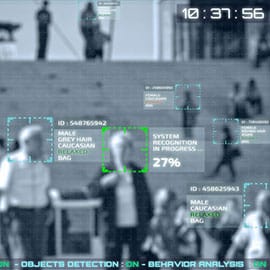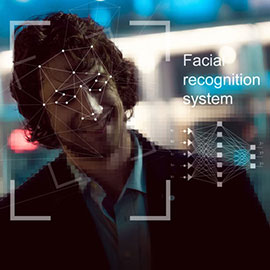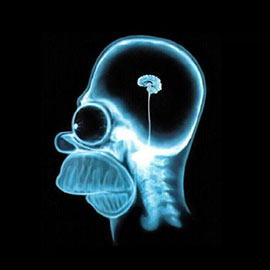The term facial recognition is used to describe the process in which a computer application verifies a person’s identity. The software is used to detect the location of a specific face in a particular photo or video, and it’s wise enough to ignore other surrounding objects such as buildings, animals, cars or trees.
Now, simply from a person’s face, it is possible to tell people’s gender, their approximate age, whether they use glasses or not, and even how they are feeling. So there is no doubt that a human face is a rich source of very valuable information.
Human beings are able to process faces very quickly. It only takes us less than one second to recognize someone and even to determine how they are feeling. In the case of the software, however, it takes a more complex but very accurate process.
In other words, this process starts by examining the picture or video, then it determines if there are any faces in that frame by distinguishing them from the background. This procedure is done despite poor illumination, camera distance or changes in the orientation of the face.
Difference between facial detection and facial recognition
You might be wondering… “But if the software detects a face, it is because it was recognized”. Well, that is the idea, more or less.
Unfortunately, the terms facial detection and facial recognition have been misused, especially by the media, who often have a hard time distinguishing the two processes. As mentioned above, the idea is that in order to have facial recognition, first of all there must be facial detection.
Facial detection is the process in which the software determines, through algorithms, whether there are human faces in a picture or video. It does not determine a person’s identity; it only tells whether there are faces in there. For that reason, face detection does not store any information or detail about the detected person, it’s completely anonymous. So if the software detects a face in a particular picture, and this same face is detected again later on, it will not recognize that face as being the same person, since it will just provide a detection of a human face in a certain picture or frame. However, it will be able to keep some demographic information, such as gender or age of the person, being useful for demographic statistics. In conclusion, face detection by itself does not recognize an individual.
Moreover, facial recognition identifies automatically. This means that the software makes a positive identification of a person’s face, in a photo or video, against an existing database of faces. This recognition is possible because the face has been previously enrolled into a database of subjects. In order for face recognition to provide a successful recognition, the face needs to be enrolled following some quality criteria, like frontality, illumination or face size (in pixels).
Next, the software will determine unique facial key points used to identify the specific person enrolled into the database. In the next place, the system will use these key points to compare them against the information from the new picture or video. And then, if the face has a high level of confidence it will mean that there is a ‘match’, so the concrete face will then have been ‘recognized’.
There are many details that are necessary to recognize a person’s identity or characteristics, details that are undetectable to the human eye. But now, thanks to the incredible new technology developments, we are able to build hi-tech software that’s even capable of recognizing multiple faces in changeable and crowded environments, such as airports, train stations, shopping malls, sport stadiums…
Just as Herta’s CEO, Javier Rodríguez says “the human eye is the most perfect machine that exists. Although a machine may have in memory millions of faces that human beings could not recognize”.
Do you have any idea about how you could use facial recognition? Get in touch with us!
Written by: Laura Blanc Pedregal




